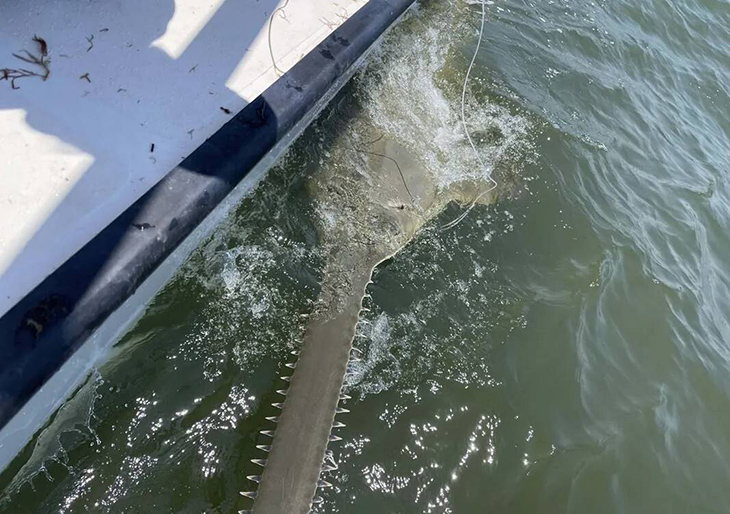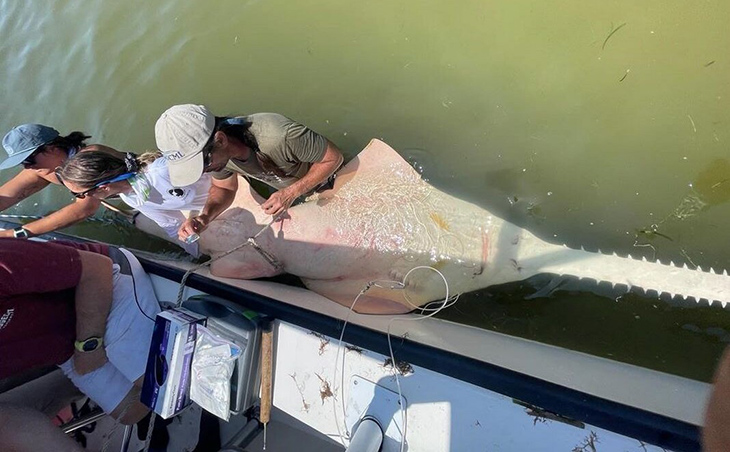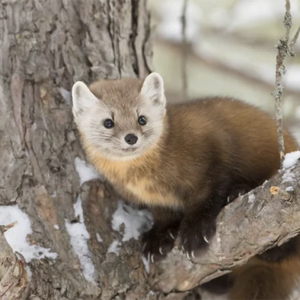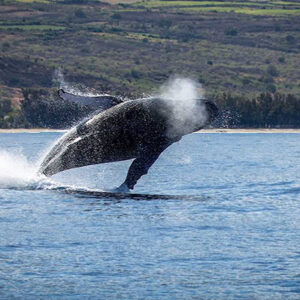
During a fishing trip in Florida to reach a group of students about shark habits, a scientist managed to land a 13-foot jagged-faced creature of a different sort.
Although it had incredibly sharp teeth like that of jaws, what the fisherman had caught from the depths of Cedar Key was a very mature female sawfish. This strange looking relative of stingrays, this particular fish has a nose – called a rostrum – that looks like a menacing chainsaw, which also happens to be an animal almost extinct in the United States.
Marine ecologist at Florida State University, Dean Grubbs, had initially set out with the hopes of capturing a juvenile shark. In fact, he was hoping to get a nurse shark in order to provide a learning experience for all the students on the boat.
But what he caught in the gulf waters located southwest of Gainsville was not the sea creature he wanted, but rather something even better in a way.
Grubbs says in a statement, “I was pretty sure this was a sawfish, but I remained stone-faced because I didn’t want to disappoint the students if I was wrong. I saw the tail before the rostrum, so I lost my calm at that point and screamed ‘Sawfish! It’s a sawfish!’”
When they managed to secure the fish to the side of their boat, one of the students went back to shore to get a tagging device, despite not thinking they would actually need one. Incredibly, it was the first sawfish to be discovered and tagged in the Cedar Key area in more than 30 years.
Sawfish were once quite widespread in the US Southeast, however, their numbers dropped for many different reasons. In fact, they were the first native freshwater fish to be placed on the Endangered Species list.
By tagging this fish, biologists will be able to track this jeopardized animal for at least one decade to see how they spend their time. Grubbs and his colleague were highly encouraged to see that the animal was not only female, but she even had mating scars which means she was reproducing.

Typically, sawfish nurseries are located in serene waters beneath and around mangrove trees, such as those close to Tampa Bay, which happens to be south of Cedar Key. Three juvenile sawfish were also recently spotted at one of the sites called Rattlesnake Key.
It is believed that during the early 20th century, both Cedar Key and Rattlesnake Key were filled with sawfish. In addition, there is a growing belief that these sea creatures are slowly recovering and returning to their historical habitats.
Director of the Florida Museum of Natural History’s shark research program, Gavin Naylor, says in the statement, “What’s remarkable to me is that they’re creeping back into exactly the previous habitats and range from which they’ve been extirpated. It’s as if they have a deeply embedded knowledge of where to go.”
Grubbs also told Newsweek that the sawfish population is rebounding following their inclusion in the Endangered Species List, as well as the implementation of additional conservation measures. These measures included heightened protection for mangrove ecosystems and the prohibition of gill nets, which were notorious for ensnaring sawfish rostrums.
What are your thoughts? Please comment below and share this news!
True Activist / Report a typo


